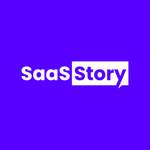How Guru Hariharan’s CommerceIQ Is Quietly Rewriting Ecommerce Workflows

“Unlock profitable e-commerce growth”
CommerceIQ tagline
Most people would think twice before leaving a company like Amazon. But when Guru Hariharan left it, he had a solid reason.
He wanted to start his own company.
Not because entrepreneurship was a buzzing trend at the time, but because he saw a widening gap that he thought he could fill.
During his Amazon stint, he realized that the majority of retailers were armed with lots of data, but it wasn’t helping them grow their business.
In 2012, he launched CommerceIQ (originally Boomerang Commerce), a platform designed to help brands make sense of their online sales and marketing.
The new venture began with a simple vision: make eCommerce less complex and more predictable.
Today, it has grown into a system used by some of the world’s biggest consumer brands. However, CommerceIQ doesn’t believe in just tracking numbers.
It is more interested in tying them together and turning scattered data into decisions about pricing, advertising, supply, and sales.
Guru’s journey hasn’t been easy.
He had to step away from the safety of big tech and risk building something from the ground up.
The first few years had him confronting questions every budding entrepreneur does: how do I prove my idea’s weight, how do I fund my venture, and how do I stay afloat in a volatile market?
Read on to find out how Guru Hariharan turned his humble idea into a profitable business, and trace the ups and downs he experienced through his journey.
CommerceIQ: A Small Idea That Made a Big Impact

Selling online can feel like navigating a ship through fog.
You see an ocean of data everywhere in the form of sales charts, ad reports, stock numbers, and product pages, but it rarely points in one clear direction.
This is the exact problem Guru Hariharan set out to solve when he founded CommerceIQ.
What does it do?
CommerceIQ helps brands view the holistic picture of their eCommerce business.
It pulls together scattered information from sales, supply chain, advertising, and the digital shelf. Then, it turns the data into decisions that actually make a difference.
The platform unifies the available data in the background so teams don’t remain stuck in silos.
It automates tasks that could take hours, like spotting low inventory or flagging broken product content. It also offers suggestions instead of leaving brands with unanswered questions.
For example, it will point out when an ad budget needs to shift or a product page needs attention.
CommerceIQ bundles several functions under one umbrella.
It automates and combines retail media management, category analytics, operations, and sales management. Brands using it often see about 18% growth in sales on average.
The companies that turn to CommerceIQ include large consumer brands with hundreds of products across multiple retailers.
For them, even small mistakes, like overspending on ads, missing a stockout, letting weak content slip through, can mean millions lost.
CommerceIQ helps them avoid these kinds of pitfalls and focus on profitable growth.
Today, over 2,200 brands count on CommerceIQ. Big names like Johnson & Johnson, Bayer, Kimberly-Clark, Kellogg’s, Nestlé, Colgate, Whirlpool, and KIND are among them.
They use CommerceIQ to manage incremental sales, unit profitability, and market share on retail sites such as Amazon, Walmart, Target, Instacart, and others.
The benefits provided by CommerceIQ are practical and powerful. Decisions are clearer, time is freed up, ad spend stretches further, and shelves stay stocked.
These are the kind of results that ultimately allow brands to create a stronger presence in crowded online marketplaces.
CommerceIQ is based in the US, with its headquarters in Mountain View, California. It also has offices in Seattle, London, and Bengaluru.
In 2024, the company reportedly brought in about US$136.6 million in revenue. That’s up from around US$99.2 million in 2023.
While Guru hasn’t explained the reason behind the change in the name of his platform (from Boomerang Commerce), it is safe to assume that “Commerce” likely stands for trade and business, and “IQ” for intelligence and smarter ways to work with data.
Unravelling the Founder: Facts, Frictions, and Philosophies
From the beginning, Guru Hariharan’s journey has been about fusing technology with business.
This makes sense because he studied Electrical and Computer Engineering at the University of Texas at Austin. Here, he learned the technical skills that would later shape his career. Thereafter, he earned an MBA from the Wharton School at the University of Pennsylvania, adding the business angle to his engineering background.
He started his career at Amazon, where he spent more than five years building automated systems for vendor management and supply chains.
He also worked on tools that supported third-party sellers, many of which relied on artificial intelligence to guide pricing and inventory decisions.
Later, he moved to eBay, taking on leadership roles in global marketplace operations.
He helped launch programs like “Fast N’ Free” shipping, which made returns and delivery simpler for millions of customers worldwide.
By 2012, Guru saw a bigger problem emerging. Brands had all the data they needed and more, but there was no way to use it effectively.
Sales numbers sat in one system, ad reports in another, and supply chain information in yet another. He believed a unified approach was the need of the hour.
This conviction led him to step away from corporate stability and start CommerceIQ.
The path wasn’t easy. Building trust with established consumer brands took time. Many were used to manual workflows and hesitant to let algorithms make decisions for them.
Scaling was another test. Each new retailer, market, or data source added layers of complexity. And then came competition in the form of countless startups that promised smarter eCommerce tools.
Through these challenges, Guru kept his focus on making technology practical and useful.
This focus helped CommerceIQ grow into a platform used by some of the world’s largest consumer brands today.
Guru Hariharan often talks about one core idea: putting the customer first. By this, he doesn’t mean “always say yes” or “agree to every demand.”
He means understanding brands in detail, where they are today, what they might need tomorrow, and helping them move forward.
According to him, clarity in this aspect became the “North Star” for how his team works.
He says being customer-focused is less about emotion and more about reason. He wants everyone in his company to know what tools, data, and action a brand needs.
One quote of his that stands out even today is:
“Customer focus does not mean loving the customer, right? Being customer-focused is truly and for us, it’s very clear that it is understanding the customer thoroughly deeply what they are where they are today where they need to go tomorrow or the day after. And what is the path that they need to take on and … and what are the tools and techniques and people in the organization, everything that you could go multiple levels in and understand that it’s really the brain, not the heart, at least when it comes to CommerceIQ, …”
Another part of his philosophy is tolerance for failure, while distinguishing between reversible and irreversible decisions. If a mistake can be undone, he encourages the team to try, learn, and adjust.
But if the cost of being wrong is very high or if it hurts long-term trust or breaks something fundamental, then more care is advised.
He’s also motivated by market fit. Early in his journey, he realized many good products fail because they don’t align with what the market is willing to buy.
He pivoted from one idea (Boomerang Commerce) to where CommerceIQ is now because the customers’ needs demanded it.
This showed him that solving real problems matters more than chasing shiny ideas.
He brings in lessons from his time at Amazon and eBay, where algorithms and data weren’t just theoretical.
In fact, they shaped what worked in the real world. For him, technology is about practical usefulness.

Growth & Milestones
Bridging the gap between technology and business worked out wonderfully for Guru.
Let’s take a look at some of CommerceIQ's biggest achievements and milestones since it came into being.

Guru Hariharan’s Pearls of Wisdom
Like every progressive entrepreneur, Guru Hariharan has also learnt a few important lessons through his journey in the business world so far.
He shared them with the audience on an episode of Founded and Funded with Managing Director Scott Jacobson. Here’s the gist.

Market matters more than the capabilities of the team.
You can have a strong team, solid tech, and early traction, but if the market is weak or shrinking, it won’t lead to lasting success.
CommerceIQ started out as Boomerang Commerce and targeted multi-brand retailers, but discovered that even with great execution, the market dynamics made growth hard.
Recognize when the product-market fit is deceiving.
Early signals like growth, retention, and customer excitement may look great.
However, underlying issues like churn or shrinking revenue from key customers can reveal that something critical is off. It’s not enough for customers to like the product.
They must value it enough to sustain payments and commitment.
Be ready to pivot.
Sometimes small changes aren’t enough. CommerceIQ found that moderate tweaks to the existing business weren’t sufficient.
They sold off part of their original product (Boomerang Commerce) and shifted fully into what became CommerceIQ, a different market with different problems.
Making this kind of decision can be painful, but sometimes necessary.
Lead with empathy, not just logic.
Hariharan says he came from an analytical mindset, trying to solve every issue like a math problem.
But when it’s your team, customers, or board involved, you need to combine logic with emotional understanding.
Being honest, acknowledging missteps, and caring about people’s experiences matter.
Don’t split energy across contradictory missions.
Running two products for two markets can drain focus.
The team had to decide which vision to commit to.
Trying to support Boomerang Commerce and build CommerceIQ in parallel spread resources thin. Picking one path gave them clearer priorities.
Good leadership includes knowing when to give up or change course.
Stubbornness can be a virtue, but it has limits.
Hariharan didn’t give up entirely, but he knew when to leave behind a part of the business, or change course, when signals said “this is not going to work” anymore.
The humility to say “this part must go” is often what separates companies that drift from those that pivot.
Strong markets enable growth; weak ones magnify problems.
In strong markets, many issues can be masked or overcome.
In weak or declining markets, those same issues blow up.
For example, when customers go bankrupt, or when the key market (multi-brand retail, in this case) starts weakening, even solid tech cannot compensate.
The Road Ahead
From its early struggles as Boomerang Commerce to becoming a trusted platform used by household names, CommerceIQ’s rise reflects the power of persistence and timely pivots.
With revenues now crossing $100 million and a clear path forward, its journey so far is only just beginning.
CommerceIQ is poised to step into its next chapter as eCommerce surges toward a projected $7.4 trillion market by 2025.
To keep pace, the company is focused on widening its global presence, refining its Retail eCommerce Management Platform, and hiring across functions.
Further growth could also mean fresh fundraising or acquisitions.
And although challenges such as strong competitors, maintaining service quality, and international expansion may loom, it’s important to move ahead with the belief that the opportunities ahead are even greater.
Subscribe to our newsletter.
Be the first to know - subscribe today

